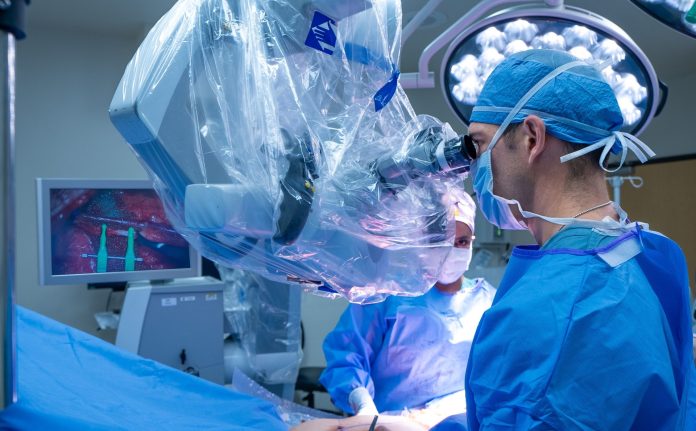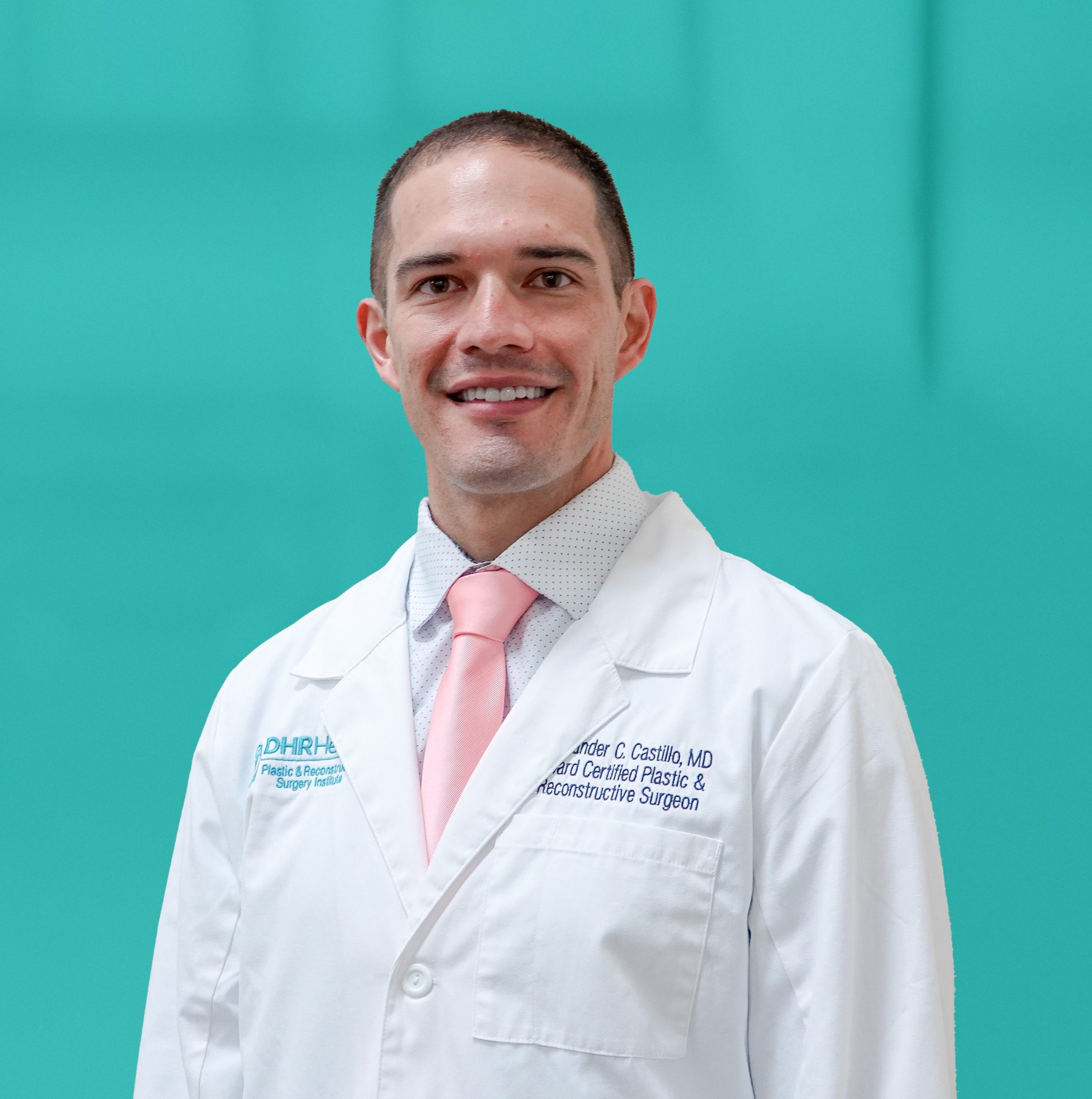
|
Only have a minute? Listen instead
Getting your Trinity Audio player ready...
|
Comfort can mean everything to a breast cancer patient, and having to travel back and forth from hospitals and clinics hundreds of miles away is not exactly the most comfortable of circumstances.
This is why Dr. Alexander Chase Castillo, a physician in the plastic and reconstructive surgery department at DHR Health, is happy when he can help a patient feel better right here.
In fact, Castillo recalled having a patient who attended each part of her reconstructive surgical process with a different member of her family about two-and-half months ago.
“One of the things that patient mentioned was this wouldn’t have been possible if she had to go Houston or had to go to San Antonio, but here she has her family’s support,” Castillo said.
Using microsurgery, the doctor says Rio Grande Valley residents who’ve suffered from breast cancer and seek reconstructive surgery can look no further than home.
“I think when we have a successful reconstruction with either route we go, in the long term it helps patients feel whole again,” Castillo said, adding that patients often feel fulfilled. “There have been multiple studies that have gone and seen that quality of life is significantly increased with patients that have chosen to do breast reconstruction.”
Castillo, who is originally from Amarillo, completed his plastic surgery residency in Galveston where he spent six years.
From there he participated in a fellowship in Baltimore where he specialized in Deep Inferior Epigastric Perforator or DIEP flap, a microsurgery that uses a patient’s own tissue for breast reconstruction.
He recalled spending every day for a year practicing microsurgery.
According to Castillo, although there are two main routes for breast reconstruction — implant-based reconstruction and reconstruction using tissue from the patient — the microsurgery has become the gold standard procedure.
During an implant-based reconstruction a physician has to build both the breast volume and skin envelope. Throughout that process the surgeon must use an expander which helps stretch a patient’s skin, which may lead to discomfort or pain for the patient.

Throughout the expander phase the patient is required to visit their doctor once a week to inject more saline into the implant until the skin is stretched enough.
“Each time that we inject more saline into that tissue expander it leaves room for that expander getting infected or setting bacteria to it,” Castillo said, adding that an infection would lead to an additional surgery causing the process to start over again. “It does carry a lot more infection risk, a lot more probably unneeded surgeries.”
Castillo explained that an implant-based procedure leaves a 30% to 40% chance of infection throughout the process.
He said the microsurgery procedure proves to be more beneficial for the patient due to a physician not having to use a tissue expander. This minimizes the chances of infection due to them using the patient’s own tissue and not having to inject saline.
During a microsurgery breast reconstruction, a physician will often repurpose the lower abdominal tissue below the belly button or umbilicus area.
He explained that they identify abundant blood vessels, an artery and a vein from the abdomen, disconnect and attach it to the chest.
“Then we bring in a microscope, for the microsurgery component, and we’ll resew the arteries and the veins back together to reperfuse that tissue,” Castillo said.
According to Castillo, the procedure can be completed at the same time a patient is receiving a mastectomy.
He added that people who have had a lumpectomy or a mastectomy in the past can also undergo this procedure, with it being more common among those who’ve had mastectomies.
“We can do it in a delayed fashion or an immediate fashion,” Castillo said.
The procedure takes about four hours for one breast and up to six to seven hours for both.
When describing the benefit, the doctor spoke softly.
“It does take most of the day but I think the advantages that it brings to the patients and the long-lasting result of it is well-worth it for us,” Castillo said with content in his voice.
Prior to Castillo offering the procedure in the Valley, he said patients wanting to receive the microsurgery would have previously needed to travel to MD Anderson Cancer Center in Houston.
“I saw a really big void in not being consistently and reliably offered down here,” Castillo said. “That was the main driving force to bring my family and myself down, is to be able to offer this procedure for the patients so they don’t have to leave the Valley anymore.”
According to Castillo, this procedure is currently not offered anywhere outside of DHR Health, which is currently working to expand the services to the Brownsville location.
In fact, Castillo just performed a microsurgery breast reconstruction in Brownsville on Tuesday.
This was one of more than 150 procedures they’ve performed in just three years, which bodes well for that expansion as the team together with Castillo look to increase the availability Valley-wide.
“Now what we’re starting to look at doing is also connecting nerves at the same time so that we can provide sensation back to the tissue that we moved…” Castillo said, adding that a year post-surgery patients are beginning to gain sensation.
“These are some of our happiest patients.”



